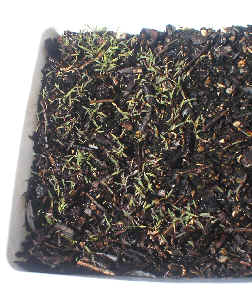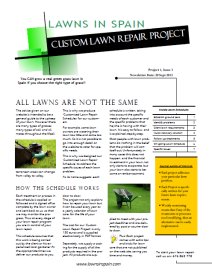
click image for details More details on sowing a new lawn. This information contains step by step recommendations to assist in achieving a new lawn 10 days after sowing. Plus tips on how to improve germination, not published on this website. Customised New Lawn Project. |
Seeding a lawn requires dedication and commitment and a full understanding of the work involved in not letting any of the seed dry out. This means keeping all of the grass seed wet, all of the time, until all of the seed has germinated. With warm season grass seed this could take about 4 weeks, so unless you have done this before or are a professional, we do not recommend Drought Resistant Grass Seed. Seeding a lawn in Spain is completely different from seeding a lawn in the UK. It is particularly difficult and not recommended for an amateur or enthusiast. It is best left to a professional. So if you don't have the expertise or you're not going to be able to give this commitment, then think about buying plugs. Still interested in seed? See our selection of Lawn Grass Seed |
 |
Seeding a Lawn
Have you grown any other plants from seed? If not the chances of success creating a lawn by sowing grass seeds are slim.
Seeding a lawn with warm season (Mediterranean) draught resistant grass is not easy, its a slow but possible process. Firstly the seed can take up to one month to germinate and needs watering all the time until it does. At best manufacturers indicate 85% germination rate, so you are already 15% down on your investment. Next, when it does germinate the grass seedlings are so small (smaller than an ant) they take over a month again to produce anything that begins to look like a lawn. Lastly because germination is climate (temperature) dependent, there are only certain times of the year (when the temperatures exceed 25 degrees) that you can sow the seed and expect it to germinate.
|
|
Fact: Draught
resistant grass seed is very difficult to get to grow. It takes
dedication for several weeks.
The picture on the left was taken 3 weeks after germination, and germination also took 3 weeks. The example shown is of our "Ultra" draught resistant seed (spot the grain of rice !!). At this stage we would normally feed it with starter/seedling
fertilser to encourage root growth. |
In contrast cool season grass seed germinates within about 5 days and if watered and fed will produce you a lawn that needs its first cut in around 10 - 14 days. But even this process in the Mediterranean is not easy.
It is for these reasons that we recommend sowing cool season grass seed and planting warm season plugs.
This is our best recommendation for rapid success with your new lawn.
Unfortunately, few of us get to choose the type of lawn grass we have in our gardens. If you are in the happy situation of preparing a brand new lawn, or doing some lawn renovation, make sure that you get some guidance about what lawn grass, or blend of grasses grows best in your area. While running type grasses such as couch, kikuyu and buffalo grass establish quickly and spread rapidly, remember that they may invade garden beds. Bunching type grasses on the other hand will remain in a defined area, though some species are inclined to clumping which can open up spaces that can be invaded by weeds. You need to know whether the grass you choose will stay green all year and how it will perform in semi-shaded areas of your garden. Choosing the best species will make lawn maintenance easier in the long run.
Try to determine the type of grass that grows best in your
climate and the best time to sow Do not sow if there is a chance of heavy rain, or disturbance generally to
the ground.![]()
For cool-season grasses (which grow best in fall, spring, and, in some areas, winter), the best time to seed is late summer to early fall. At that time of year, the ground is still warm enough for quick germination, and the young grass plants have the entire upcoming cool season to become established. Early spring is the second-best time to start a cool-season lawn from seed. The young grass has less time to become established before the onset of hot weather, but results are usually satisfactory as long as you start seeding early enough.
Allow 5 - 10 days for cool season grass seed to germinate.
Warm-season grasses are best sown in late spring, (when
temperatures are above 15 degrees) but plugs can be
planted all year round if the temperatures are high enough, in warm climates.
In Spring, the weather is mild, but warm enough to let you get the grass
established before the hot weather of summer and the most vigorous time for growth.
Allow up to 30 days for warm season grass seed to germinate.
Hide this content.
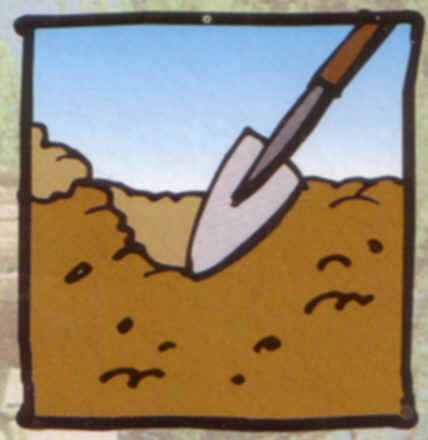
Prepare to a depth of 10 cms.

So, you have prepared the soil, prepared the ground, you have chosen the seed and are ready to go. Seeds don't know anything about fertiliser so do not fertilise at this stage.
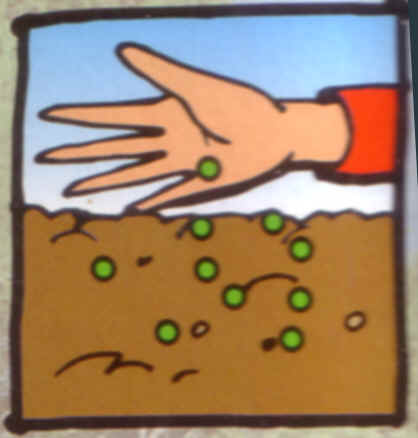
Sowing rates (coverage) and guidelines for most grasses are shown on the Products and prices page
Tip: Provided it is the right time of the year and the weather
conditions are ok (you don'nt want the seeds to rot in low temperatures), sow some of the seed in a jam jar and add a teaspoon full of water and close the lid. This is important for 3 reasons: So the most likely cause of bald
patches in new lawns is that soil will dry out
unevenly and when this happens the seed will dry out unevenly. When this
happens it will inevitably lead to a patchy lawn where some of the seed has
died. A second sowing will generally sort this out. Note: If you suffer from ants, then a good idea is to mix some ant powder with the seed.
Statistically it is not possible to end up with bald patches of lawn after sowing seed, but there is another reason for bald patches the reason
is explained... ![]()
Make sure that you properly set your spreader rate for sowing seed.
Grass seed germination rates range from good to average. Check the manufacturer's
guidelines, but many times, the spreader has the necessary information printed on
it. Put half the grass seed in the spreader. Spread the first half of the seed by walking in one direction and then spread the second half crisscross to the first direction. This pattern ensures even coverage.
1) Given the right time of year for the seed, it will establishe that you have good seed.
2) Given the temperatures at the time, it will establish how long it takes for that type of seed to germinate.
3) It will also establish that it was not possible for the seed to dry out.
This will give you a foolproof test for the germination of the seed and also an early
indication of the when the seed in your lawn will be starting to grow.
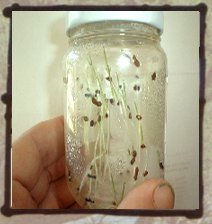
Hide this content.
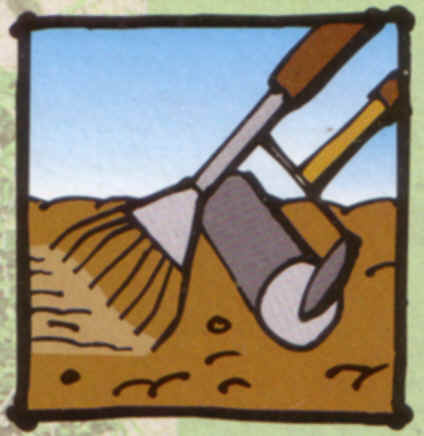
If seeds are fine, they will not need top dressing, but it is recommended to cover them with something that will protect them from the sun and retain moisture. In the winter cover with polythene, but as the temperatures rise in Summer cover with geotextil, green plastic mesh, straw etc.
.If
the seeds are larger then... ![]()
If you live in a windy area where the peat moss blows around or if you're trying to save
some money, you can lightly rake the seedbed instead of mulching. Use a stiff metal rake and just lightly push and pull the tines back and forth to make shallow grooves and cover the seed. Don't push too hard, or you'll move the seed around or cover it too deeply.
To ensure good contact between seed and soil, roll the entire area with a roller that you've filled only halfway with water. Roll the perimeter first and then finish the entire area.
This will also prepare the ground ready for its first cut.
Hide this content.
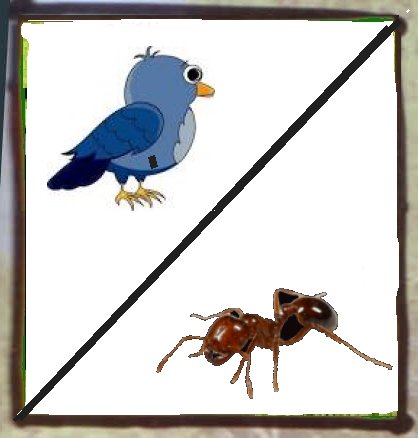
Ants can clear all the seed from a newly sown lawn in 1/2 day. Birds can
do the same to newly germinated seed.
See our products page for Ant Powder and
Green Netting for birds.
See also our lawn pests birds page.

This may be the most important step. With the first lawn watering, make sure that you apply enough water to wet the soil down to at least 6 to 8 inches. For newly sown seed keep the seed damp until it germinates. For pre-treated seed, this is already growing when sown, so apply enough water for about 2 -3 days to establish the young seedlings. Whether you apply seed or pre-germinated seed our Watering Gauge will tell you exactly when to water. So don't take a chance use a watering gauge, for the cost its not worth the risk.
Apply the water gently so that ...
![]()
You may have to water several times in short intervals until the bed is thoroughly wet. After
that only water often enough to keep the top inch or so of the seedbed moist until the seed
germinates - DO NOT LET THE SOIL DRY OUT. Remember, seeds get only one shot at germination. Let them dry out, and they're dead.
Sprinkle the seedbed lightly with a handheld hose several times a day
(especially if it's hot or windy) to get even germination across the entire lawn. However, you don't want to overdo it. Too much water causes the seed to rot. Watch the color of the soil surface. As the soil dries, the surface becomes lighter in color. When you notice about half to two-thirds of the surface lightening up, it's about time to
water again.
Hide this content.

Cut when it is about 10 cms high and fertilise using the "Lawns in Spain" Starter Mix fertiliser.
Don't forget to use a starter fertilizer. Starter fertilizers are high in the nutrient phosphorous, which is essential to seedlings.
Here comes the neighbor's dog! Oh, no, what a muddy mess. To keep kids, pets, or whatever off your newly seeded, very wet lawn, encircle it with brightly colored string attached to small stakes. However, that may not be enough for the dog. If the lawn is small, you can surround the whole area with some roll-out metal fencing available at hardware stores — or at least tell the neighbor to keep her dog in her own yard.
As your new lawn becomes established, you can start easing up on the water, depending on the weather.
If you continue your everyday watering routine, you're likely to overdo it and rot the young seedlings.
Also, if the ground is too wet, you can inhibit root growth.
So after a short while and the new seedlings are appearing...![]()
But there's more to a new lawn than just watering. You need to mow the new lawn when it reaches 3 to 4 inches high, depending on the type of grass. Mow when the soil is on the dry
side, otherwise you might tear up the new turf.
You also need to apply Lawn Fertiliser.
Make your first application of Lawns in Spain starter
fertilizer about 4 to 6 weeks after germination. Young seedlings have a hefty appetite, so don't skip this important feeding.
Remember water, feed, cut, water, feed, cut until the lawn is
established.
Hide this content.

